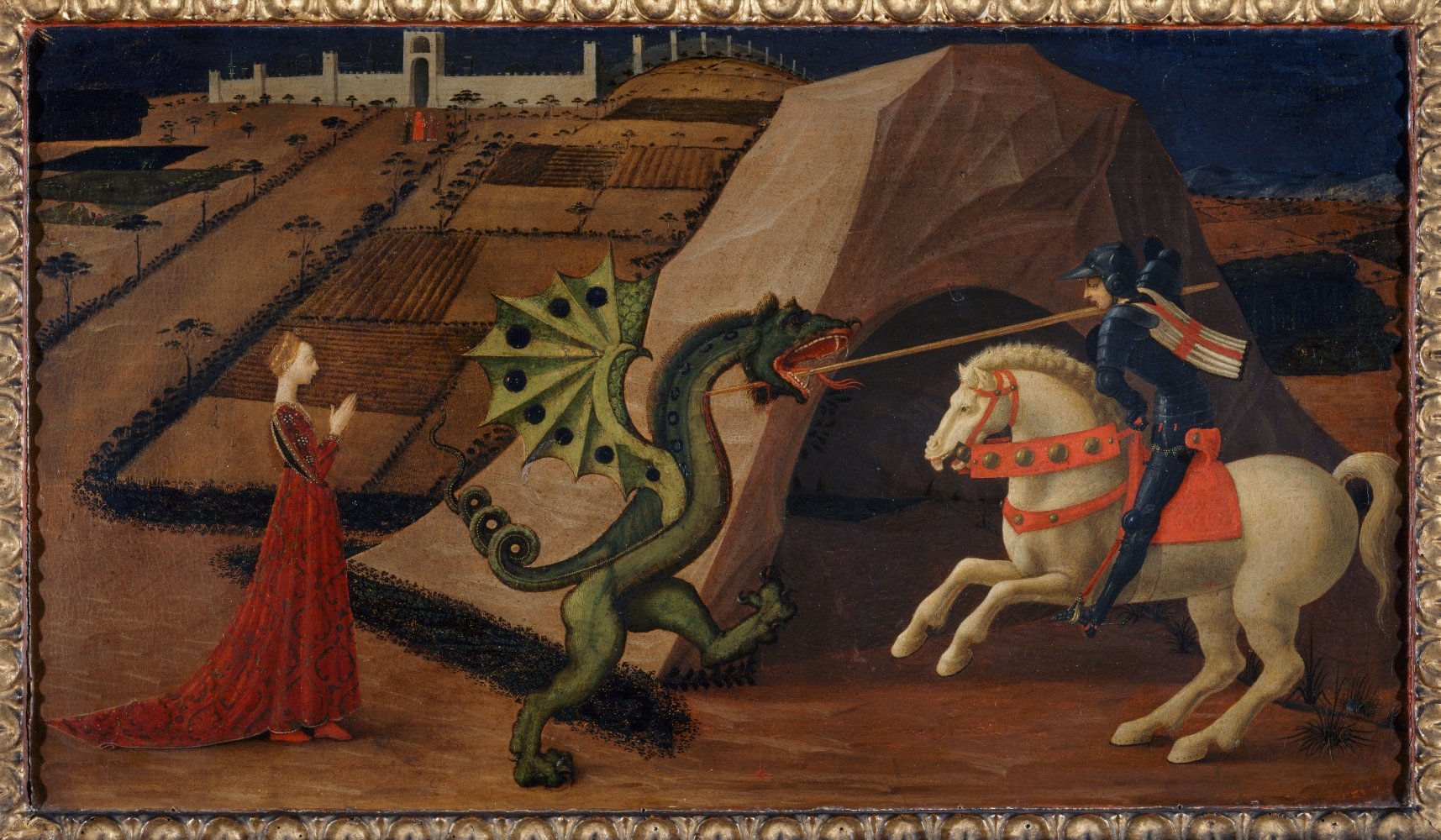
When the animal kingdom met the artistic imagination, the result was a whole zoo full of fantastical creatures from dragons to unicorns, phoenixes to sphinxes. These strange mythological beasts haven usually taken on symbolic significance, and reappeared time and again in art made by different cultures across time, as shown by an ambitious new survey of more than 250 objects opening this fall at the Louvre-Lens.
This wide-ranging, whistle-stop tour starts off in the Bronze Age. The oldest surviving fragments of cave art are proof enough that humans have long been driven to depict the wonders of the natural world, but it wasn’t long before we started taking a bit of creative license. One of the show’s earliest exhibits, a Mesopotamian seal cylinder that dates back to 3300–3000 B.C.E., features a lion-headed eagle.
As pagan beliefs died out in favor of modern religion, biblical tales still kept audiences in awe by having their brave saints slay the same dragons that had once been popularized by ancient Greek mythology. Majestic, make-believe beasts were not always our adversaries, however, but often had magical powers of healing or protection.
The exhibition won’t leave visitors in the dark ages, but instead goes on to explore how mythological creatures have continued to enthrall new audiences. It turns out that the wild visions of Romantic artists like Henry Fuseli and the Pre-Raphelite painter Edward Burne-Jones have plenty in common with the science fiction and comic books that are so popular today.
“Fantastic Animals” is on view at Louvre-Lens, 99 Rue Paul Bert, 62300 Lens, France, from September 27, 2023 through January 15, 2024.
Preview artworks from the exhibition below.
Jean Gargot, Big Ghoul (1677). Photo: Christian Vignaud, © Musée de Poitiers.
Nicolas Buffe, Peau de Licorne (2011) Photo: © Cité internationale de la tapisserie, Aubusson, © Nicolas Buffe.
Jean-Auguste-Dominqiue Ingres, Roger freeing Angelica (1819). Photo: Franck Raux, © RMN-Grand Palais (musée du Louvre).
Figurine of the demon Pazuzu (911-604 B.C.E.). Photo: Thierry Olivier, © Musée du Louvre, Dist. RMN-Grand Palais.
Will Cotton, Roping (2019–20). Photo courtesy of the artist and Templon, Paris-Bruxelles-New York, © Will Cotton © ADAGP, Paris 2023.
Henry Fuseli, Thor fighting the serpent of Midgard (1790). Photo: © akg-images, Royal Academy of Arts, London.
Molding of a relief depicting a mythological scene, (c. 1200-1100 B.C.E.). Photo: Raphaël Chipault, © Musée du Louvre, Dist. RMN-Grand Palais.
Paolo Uccello, Saint George Fighting the Dragon (c. 1440). Photo: Agence Bulloz, © RMN-Grand Palais.
Thomas Grünfeld, Misfit (flamingo-pig) (2005). Photo: © Galerie Jousse Lothar Schnepf © ADAGP, Paris, 2023.
Gustave Moreau, The traveler or Oedipus the traveler (1888). Photo: René-Gabriel Ojeda, © RMN Grand Palais.
Walter Andrea, Dragon-serpent on Ishtar Gate (1902). Photo: Andres Kilger, © BPK, Berlin, Dist. RMN-Grand Palais.
Cylinder seal depicting lions and an eagle (3300-3000 BEC). Photo: Franck Raux, © RMN-Grand Palais (Musée du Louvre).
Edward Burne-Jones, The Doom Fulfilled (1884-1885). Photo: Paul Carter – Bridgeman Images, © Southampton City Art Gallery.
An acquamanile (vessel). Photo: Jean-Gilles Berizzi, © RMN-Grand Palais (Musée du Louvre).
More Trending Stories: